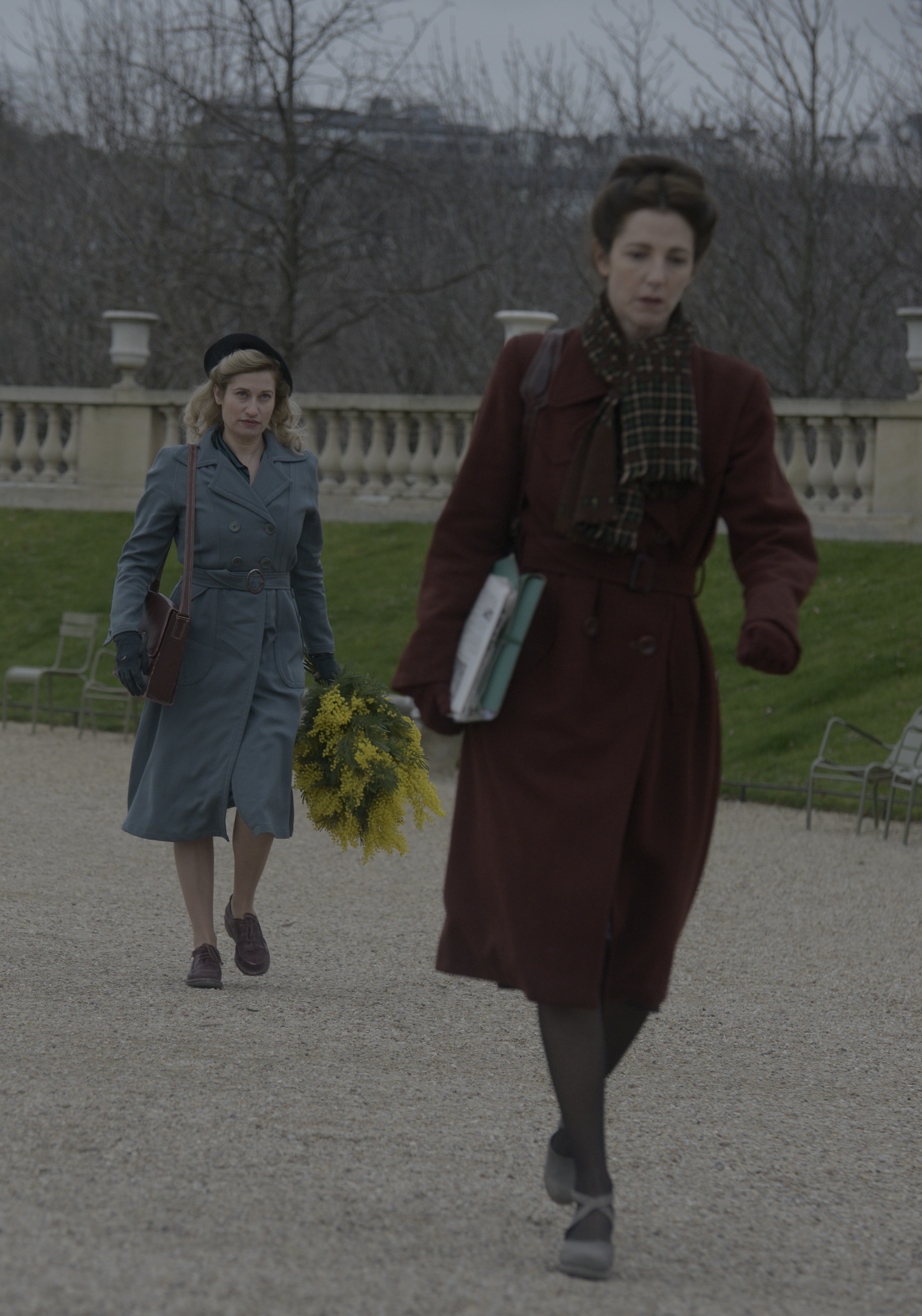Opening ThisWeek
Beyond the Edge
Opens Fri., July 11 at Sundance Cinemas. Not rated. 90 minutes.
The bigger the camera, the bigger your subject should be. One reason Titanic worked so well, back in ’97, was James Cameron’s decision to film the shipwreck in widescreen. He also had an array of digital tools, plus a nation full of huge multiplex screens and stadium seating—none of which A Night to Remember, shot 40 years before on smaller aspect ratio, had enjoyed. And only two years ago, Cameron reissued his film in 3-D IMAX format. Size sells.
Mount Everest represents the same massive attraction to filmmakers. There was the IMAX Everest doc in ’98, with local climber Ed Viesturs among those on the ascent; and four years ago the doomed English expedition of 1924 also went the IMAX route in The Wildest Dream. So what’s left to film? The first successful Everest expedition, which placed Edmund Hillary and Tenzing Norgay on the summit in 1953. As with the Titanic, this is hardly an obscure historical episode. The English effort was well photographed and documented in newsreels, and New Zealand filmmakers Matthew Metcalfe and Leanne Pooley make good use of those source materials here. But this can’t just be a grainy black-and-white archival job for the History Channel, so they’ve gone the 3-D route for the new footage and, groan, reenactment scenes—always a questionable practice.
Beyond the Edge is mainly intended as a tribute to the tall, modest former beekeeper that was Hillary; and it succeeds that far. But we mustn’t ignore the plucky, determined Norgay, so he’s valorized, too. Everyone’s brave, everyone’s admirable, and everything ends well for the expedition. Again, it’s hard to spin much drama out of such a renowned, successful endeavor. Experts and even Mallory’s son hint at his class anxieties, but this just seems a cheap overlay of modern neurosis, an unsupportable gimmick. Is there something so wrong about having a psychologically normal and well-adjusted hero?
To its credit, the 3-D aerial vistas of Everest look great in Beyond the Edge, though most of it was actually shot near Mt. Cook in the Southern Alps of New Zealand. (Like the LOTR movies, this is a postcard-perfect invitation to visit that country.) This familiar story isn’t entirely dull, and local alpinists will chuckle at some of the historical details, like expedition leader John Hunt pecking away on a typewriter in his tent, high up at base camp. And today we complain there’s too much technology on the mountain. Brian Miller
Half of a Yellow Sun
Opens Fri., July 11 at Sundance. Rated R. 113 minutes.
The problems of squishing down a novel to fit a two-hour movie are familiar; when a complicated historical setting is added to the mix, things really get thorny. Half of a Yellow Sun tackles a decade or so in Nigeria’s tortured chronology, from its early years of independence to the disastrous Biafran war that divided the country in 1967–1970. The pattern is cut from Chimamanda Ngozi Adichie’s prize-winning 2006 novel, and pattern is about all you can discern in the film’s dutiful but sketchy treatment.
The early scenes in post-colonial Nigeria are vivid and saucy. We meet two sisters, Olanna (Thandie Newton) and Kainene (Dreamgirls dynamo Anika Noni Rose), who’ve been raised in wealth and educated abroad. Kainene—who disappears from the film for far too long—gets involved with a white British writer (Joseph Mawle), while Olanna travels across the country to join her fellow professor and lover, Odenigbo (Chiwetel Ejiofor). He’s a political agitator, although for a while the movie’s look at tribal loyalties and new political movements is back-burnered in favor of more personal intrigue: sexual betrayal, payback, an out-of-wedlock baby.
When we do get to the establishment of the short-lived Republic of Biafra, director Biyi Bandele creates a handful of disturbing scenes, especially a massacre at an airport that is all the more chilling for being so calmly implemented. There’s something powerful about the juxtaposition of images, as the movie travels from bright, stylish academics debating philosophy to soldiers carrying bloodied machetes down the middle of the street. (Those disparate images still haunt Nigeria, as the grotesque jihad of Boko Haram has proved.) The main problem with Yellow Sun is that—despite the power of Newton and Rose, who rather overshadow 12 Years a Slave star Ejiofor here—the characters are forced to stand around and deliver exposition on a too-regular basis. And even with all that summarized history (also augmented by newsreel footage and a narrator), the reasons for the sectarian violence and the civil war itself will remain incomplete for non-specialists in African history. At the end there’s the suggestion that we’ve been watching the stories of real people, although the source is a fictional work.
That final note—seemingly added to tie up some tragic loose ends—only adds to the sense of confusion. Robert Horton
PThe Internet’s Own Boy
Runs Fri., July 11–Thurs., July 17 at Northwest Film Forum. Not rated. 104 minutes.
This documentary about the short life of Internet hacktivist Aaron Swartz (1986–2013) begins and ends with heartbreaking home movies of the child prodigy in Chicago. Director Brian Knappenberger got full access to the Swartz family, and their candor about Aaron—hounded to suicide by draconian federal prosecutors—is no less moving. But, in a sense, tears are the easy part here. We see a bright, idealistic teen programmer treated as a peer by the adults with whom he helped develop RSS; he later co-founds and sells Reddit, then transitions to political causes. Here is a gifted young man, his life cruelly cut short.
What’s harder to convey—which Knappenberger does with many screen graphics and expert interviews—is the complicated, contested notion of what the Internet should freely divulge, keep secret, or license and hold behind paywalls. I confess, as a journalist whose brain is constantly connected by keyboard to the Web, that Swartz’s important activities and untimely death didn’t first register as they should’ve. The federal charges, brought in 2011, seemed impossibly dull: downloading academic journals, gigabytes, IP addresses, proxy servers, and endless lines of code. Always with the coding, some of which we see onscreen. Coding, coding, coding.
Yet that was Swartz’s great love: coding as a kind of magic; coding that, if used altruistically, could provide public access to restricted yet publically funded research (and court documents, and government laws and records); coding that could promote democracy and disseminate knowledge. And Swartz has plenty of high-powered friends and mentors who testify here about that civic good: Lawrence Lessig, Tim Berners-Lee, Cory Doctorow, etc. And more, Knappenberger invokes Julian Assange, Edward Snowden, and Bradley/Chelsea Manning; they, with Swartz, become modern-day martyrs of the digital age.
“Sharing is not immoral,” Swartz declared in a cyber-manifesto (with other authors), which warned against the privatization of public knowledge. The feds, in a post-9/11 context, interpreted this as a pirate’s intent to steal and attack protected networks. Over and over, Swartz’s defenders decry the government’s attempt to “make an example” of this gentle young download freak. Yet Knappenberger shies away, perhaps as Swartz did, from the larger implications of everything-for-free sharing culture. All those databases he siphoned, as others do today, were edited, compiled, and indexed by someone—perhaps by some bright, penniless grad student like Swartz, only without the Reddit windfall, who needed the job. Though the feds wouldn’t speak to Knappenberger, he ought to have solicited more opinions outside Swartz’s circle of friends.
Knappenberger, who previously profiled the group Anonymous in We Are Legion: The Story of the Hacktivists, also dismisses the news accounts that Swartz’s depressive tendencies predated his arrest and prosecution. Still, this sympathetic if one-sided doc leaves the feeling that if you use the Internet and unquestioningly accept its terms and conditions, Swartz died for your sins. Brian Miller
Razing the Bar
Runs Fri., July 11–Thurs., July 17 at Grand Illusion. Not rated. 80 minutes.
Local director Ryan Worsley’s worthwhile documentary chronicles the people, culture, and eventual demise of the legendary punk venue the Funhouse, which operated near Seattle Center from 2003–12. When she heard it was shutting down, Worsley—a Funhouse patron—began gathering interviews with Funhouse staff, bartenders, clubgoers, and bands. Incorporating old photos and concert footage, plus a rocking soundtrack (including local music from The Pharmacy and the Lights), Razing the Bar is a poignant commentary on the power of music and the resilience of community.
We hear about various bands—including one whose guitar player “peed in a cup, put it in his mouth, and then spit it on the audience”— and learn about the rise of Joetta Velasquez, a former homeless runaway who booked talent for Funhouse co-owner Brian Foss; today she’s a senior producer at Austin City Limits.
Foss, host of Sonic Reducer Saturdays on KEXP and longtime Seattle talent booker, figures prominently in the film. His candid observations about the venue reflect how his golden-rule business ethic kept The Funhouse—a crusty old dive of a venue—together for nine years.
The doc relates the bar’s history as a gritty arts incubator, exploring not only the tightknit community that revolved around the club, but also gentrification, always a charged topic in booming Seattle. Many local musicians share their memories, from Kurt Bloch (Fastbacks, Young Fresh Fellows) to indie rockers Rachel Ratner (Wimps) and Anthony Fantozzi (Poop Attack, Rats in the Grass). Razing the Bar’s energy—and that of the many fans, punks, and musicians who frequented The Funhouse—gives it a certain kinship to the 1996 grunge doc Hype!, which Worsley cites as a strong influence. Gwendolyn Elliott
Third Person
Opens Fri., July 11 at Sundance. Rated R. 137 minutes.
Paul Haggis has had such a curious career, it’s no wonder he seems to make movies with no regard for fashion or demographics. The Canadian-born filmmaker labored for years as a TV writer/producer before scripting two successive Best Picture Oscar winners, Million Dollar Baby and Crash (he also directed the latter). He then co-wrote a couple of James Bond pictures and the somber Iraq War movie In the Valley of Elah, and caused a rumpus in 2011 by loudly resigning his longtime membership in Scientology.
Someone with a resume like this—did we mention he also created Walker, Texas Ranger?—likely has little left to prove. That might explain the untethered quality of Third Person, which Haggis wrote and directed. On first glance, the film appears to follow the Crash course of interlocking stories, but closer inspection suggests something much odder going on. We can’t reveal too much on that score, but at the center of the movie is a novelist (Liam Neeson) hard at work on a new manuscript. He’s holed up in a Paris hotel after a traumatic incident, his mistress (Olivia Wilde) in a nearby room and his wife (Kim Basinger) back home in the States. We also watch a tale set in Rome, where a shady businessman (Adrien Brody) gets ensnared in a human-trafficking scenario involving a single mother (the impressive Moran Atias). And there’s a Manhattan story, in which a hapless hotel maid (Mila Kunis) fights for shared custody of her son with an angry ex (James Franco, listless).
The latter story is by far the weakest; it feels necessary only to triangulate the main theme. The Rome tale has some authentic intrigue, and it’s good to see Brody (something of a wanderer since his Oscar for 2002’s The Pianist) given a shot to play to his strengths: His character is smart, self-righteous, a little oily. (As in Haggis’ other films as director, the acting is variable from performer to performer.)
There’s some refreshingly grown-up play between Neeson and Wilde, who pull flirtatious pranks on each other as he tries to dodge her questions about her own writing. The story threads take too long to gather, and the concept behind their co-existence is both enigmatic and a little thin for everything we’ve just sat through (it would make a decent short story, though). Haggis earns chutzpah points, at least, for bucking Hollywood’s shameless pandering to the youth market: He betrays no hint of gearing Third Person toward any audience other than himself. ROBERT HORTON
PVenus in Fur
Opens Fri., July 11 at Varsity. Not rated. 96 minutes.
In this adaptation of the 2010 stage play by David Ives, Roman Polanski casts his wife in the main role and makes his leading man look as much like himself as possible. As tempting as it is to read autobiographical intention into these decisions, I think it’s probably wise to take them as sardonic jokes. It’s much better to simply watch the French-language Venus in Fur as an extended and often hilarious riff on power plays and erotic gamesmanship, both of which are offered here in ripe-flowering abundance.
Venus in Fur features just two people on a single set. The conceit is that a stage director, Thomas (Mathieu Amalric), is caught at the end of a day of auditions by an obnoxious, gum-chewing actress, Vanda (Emmanuelle Seigner). He’s casting the lead in an adaptation of the notorious 19th-century novel Venus in Furs, by Leopold von Sacher-Masoch—you know, the guy who put the Masoch into masochism. By overpowering this diminutive director and flashing her physique, Vanda convinces Thomas to read with her, in an encounter that increasingly muddies the lines between the written material and their own rehearsal process. (The English-speaking movie viewer has an advantage over a theatergoer: The English subtitles are italicized whenever the characters slip into Sacher-Masoch, so things aren’t quite as muddy as they might be.) We watch this push-me/pull-you dance as it moves around the theater, morphing into something very close to a full-on horror movie by the end. Polanski is a master of limited spaces (recall Catherine Denueve and Mia Farrow in their respective apartments in Repulsion and Rosemary’s Baby), so making this two-hander come to sinuous life is no problem. He’s also spent a career observing the ways people tear each other apart, usually by tiny degrees, so the arm-wrestling here is precisely managed.
What’s especially bracing about the movie is how funny it is—even Alexandre Desplat’s entrance and exit music is amusingly bombastic. The humor comes from the movie’s worldly attitude and the performances. Having previously appeared with Seigner in The Diving Bell and the Butterfly, Amalric is expert at desperation and bluster, and he always appears susceptible to sexual temptation. Seigner, who married Polanski in 1989 and has maintained a busy career of her own, is utterly unleashed and outrageous. Someone will undoubtedly suggest that Vanda is a misogynistic projection, but the male creators here—novelist, playwright, film director—are instead conspiring to depict how feebly men understand women. Seigner is absolutely in on that plot. ROBERT HORTON
Violette
Opens Fri., July 11 at Harvard Exit. Not rated. 138 minutes.
Forgotten writers seldom return to favor. There’s Melville and . . . that’s about it. Rarely read today, French writer Violette Leduc (1907–1972) hit her peak of renown a half-century ago. Until the late success of her raw, unfiltered memoirs (beginning with La Batarde), she was best known—if at all beyond Parisian literary circles—as the protegee of Simone de Beauvoir, with whom Leduc was unhappily in love. Leduc’s scandalous depiction of lesbian amour, during the ’40s and ’50s, frightened her editors. Cuts were made and sales were few. Then came the sexual revolution of the ’60s—sweet vindication at last.
Because Leduc’s struggle was so long, the task is not an easy one for director Martin Provost in this admiring biopic. There’s a lot of life material to pack in here, setback after setback, in a picture spanning almost 30 years. His approach is comprehensive and linear, too much so. This happened and then this happened and then this happened—fine for a war movie; not so great when watching Leduc (Emmanuelle Devos) sit down to write . . . again and again and again. (Thank God the movie has a happy ending, a spoiler that I, as a fellow writer, happily disclose: Leduc ends up better than most of us poor deadline hacks—with a perfect Provence farm house to boot.)
You can’t fault Devos’ fierce, committed performance as an insecure author who forever rates herself an ugly duckling, provincial and untalented. We meet Leduc during a sham marriage during the war. She supports her gay husband as an industrious black marketeer—then, catastrophe, the war ends! Suddenly deprived of a vocation, she pours her soul into a manuscript and plops it into the startled lap of de Beauvoir (Sandrine Kiberlain), whose slightly aloof poise is rattled by her pupil’s sheer neediness—Sartre never behaves this way!
Oh, yeah, that’s another problem with Provost’s approach: the historical footnoting and encyclopedic name-dropping. Violette is thick with the musk of Sartre, Camus, and Jean Genet (only the latter is depicted), plus Leduc’s various patrons and detractors, none of whom we care about. It may be accurate, but it’s way too much. This is the kind of movie where the ever-avid yet frustrated Leduc asks de Beauvoir why she’s so busy all the time. Oh, it’s just a little book I’m working on, but I can’t decide on a title . . . The Second Gender? The Second Person?
Something like that . . .
Half of good writing (i.e., art) is editing, the pruning of what you don’t need to say after you’ve committed it to paper. Cuts must be made, Leduc’s editors—de Beauvoir included—keep telling her. Indeed. Brian Miller
E
film@seattleweekly.com







